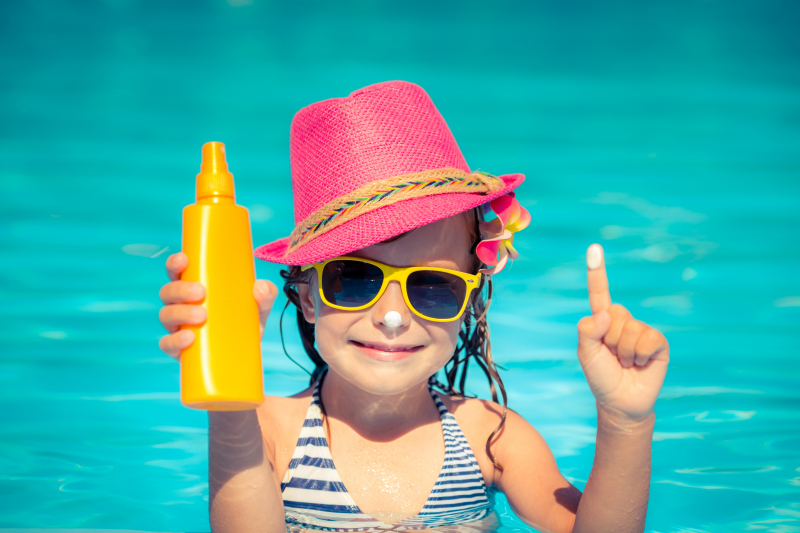Exposure to ultraviolet light is the primary cause of melanoma and nonmelanoma skin cancers and premature aging. Both of these can be largely avoided by protecting the skin from ultraviolet rays – whether from the sun or tanning beds. If you’re going to be outdoors one of the best things you can do to protect your skin is to wear sunscreen. Wearing protective clothing and avoiding the sun at the hottest times of the day (10 am – 4 pm) can also reduce the risk of developing skin cancer.
With so many options, numbers and phrases on sunscreen packages, going to the store to choose the one that’s best for you can be overwhelming. Here are some things to help you understand what you’re reading on a sunscreen label.
Your Checklist for Choosing Sunscreen
- Choose the type of sunscreen you will apply. Sunscreen options include lotions, sprays, sticks, and gels. It is easiest to ensure where you are applying sunscreen with lotions, sticks and gels so that areas do not get missed. Sunscreen sprays are popular and convenient; just be sure to avoid spraying into eyes, nose and mouth and apply generously.
- Choose a high enough SPF. The sun protection factor (SPF), in a product ranges from 2 to 100 and refers to how much of the sun’s UVB rays are blocked.
- SPF 15: Block 93% of the sun’s UVB rays
- SPF 30: Blocks 97% of the sun’s UVB rays
The American Academy of Dermatology recommends wearing sunscreen with SPF of 30 or higher.
- Select a broad spectrum sunscreen. The sun generates both ultraviolet (UV) A and B rays. UVA rays cause premature aging of the skin (wrinkles and age spots.) UVB rays cause sunburns. Both UVA and UVB rays can contribute to skin cancer and your sunscreen should include protection from both.This might also be called “broad spectrum” sunscreen. A sunscreen that does not say “broad-spectrum” only protects skin from UVB (burning) rays.
- Identify the active ingredients you prefer. Sunscreens come in two different categories: barrier vs absorption
- Barrier sunscreens, like titanium dioxide and zinc oxide, put a layer of protection between the sun and your skin that deflects the sun’s rays. This is often available in a white, thick cream or stick.
- Chemical sunscreens absorb the sun’s rays which often use active ingredients oxybenzone or avobenzone.
- Remember that water resistant is not waterproof. “Water resistant” and “sweat resistant” mean the same thing on a sunscreen label: these sunscreens have been proven to remain effective for at least 40 minutes while you’re in the water or sweating. You have to reapply when you get out of the water to prevent sunburn.
Prior to heading outdoors, whether it’s all day or just running errands in your car, apply a broad-spectrum sunscreen of at least SPF 30 (and water/sweat-resistant for swimming or activities) 20 minutes beforehand. Then, you will enjoy the great outdoors with peace of mind that you’re reducing your risk of skin cancer. And don’t forget to reapply every 90 minutes to two hours and after swimming or sweating.



